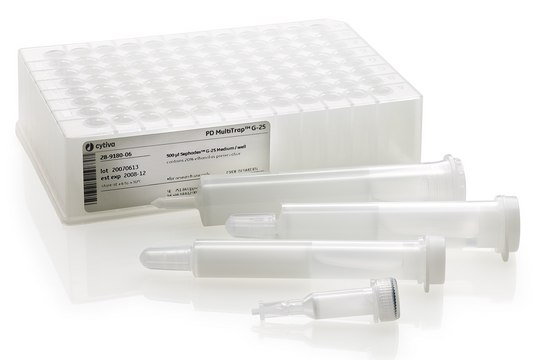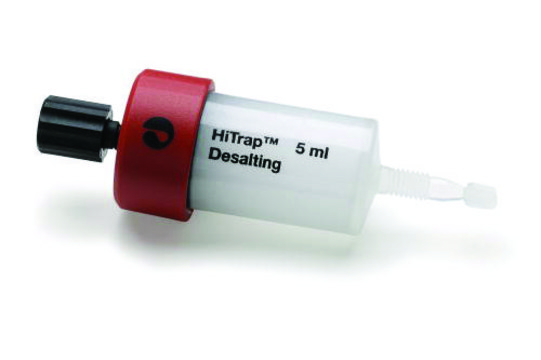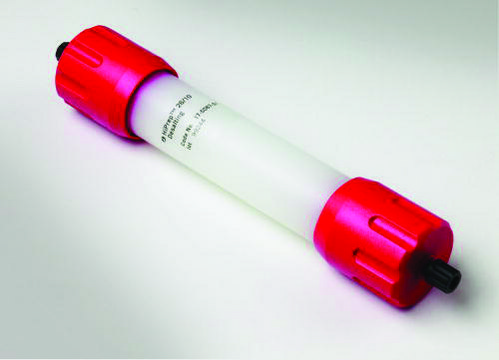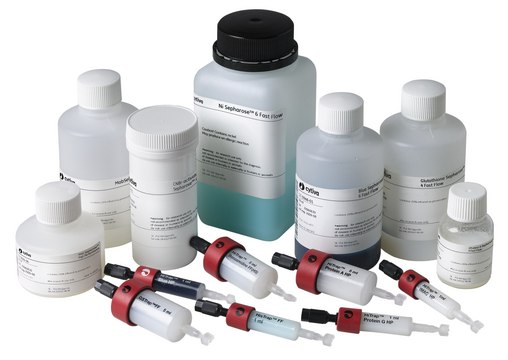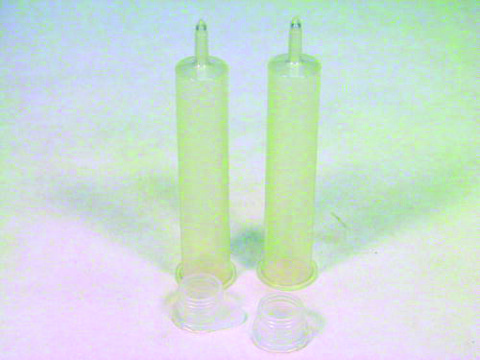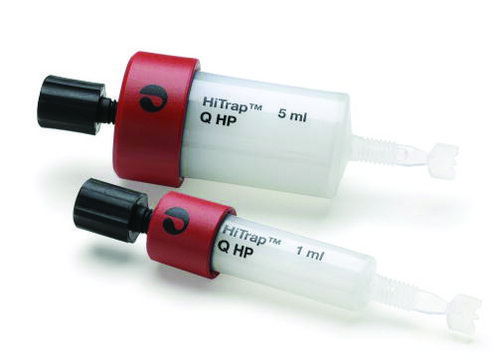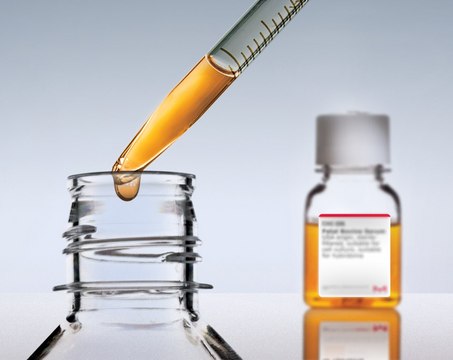GE29-0486-84
HiTrap® Desalting
Cytiva 29-0486-84, pack of 5 mL
About This Item
Recommended Products
packaging
pack of 5 mL
manufacturer/tradename
Cytiva 29-0486-84
availability
not available in North America
storage condition
dry media
parameter
42 psi
bed size
16 mm × 25 mm
bed volume
5 mL
column I.D.
16 mm
matrix
cross-linked dextran
particle size
>20 μm (dry)
cleaning
2-13
working range
2-13
suitability
suitable for bioprocess medium
General description
Application
Features and Benefits
- Handles sample volumes of 1.5 mL, or larger volumes by connecting up to five columns in series.
- Replaces dialysis as the method of choice for desalting.
- Desalting requires less than one minute due to the high rigidity of Sephadex G-25 and the optimized packing technology.
Storage and Stability
Other Notes
Legal Information
related product
Signal Word
Warning
Hazard Statements
Precautionary Statements
Storage Class Code
3 - Flammable liquids
Regulatory Information
Choose from one of the most recent versions:
Certificates of Analysis (COA)
It looks like we've run into a problem, but you can still download Certificates of Analysis from our Documents section.
If you need assistance, please contact Customer Support.
Already Own This Product?
Find documentation for the products that you have recently purchased in the Document Library.
Articles
Designing purification methods for antibodies ensures quality and quantity adequacy for research and industrial purposes.
GST-tagged protein yield varies based on protein, host cell, and culture conditions, influencing production.
This page shows how to separate IgG antibodies by affinity chromatography using HiTrap® Protein G HP columns from Cytiva.
Desalting at laboratory scale is a well-proven, simple, and fast method that will rapidly remove low molecular weight contaminants at the same time as transferring the sample into the desired buffer in a single step.
Protocols
This page shows how to separate IgG antibodies by affinity chromatography using Protein G GraviTrap from Cytiva.
Protein A Mag Sepharose® Xtra and Protein G Mag Sepharose® Xtra enable high-capacity small-scale antibody purification and screening.
General instructions for affinity purification using HiTrap columns from Cytiva.
Rules and good practice in sample preparation for Western blot sample preparation from cell culture and tissue samples.
Our team of scientists has experience in all areas of research including Life Science, Material Science, Chemical Synthesis, Chromatography, Analytical and many others.
Contact Technical Service